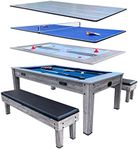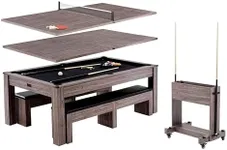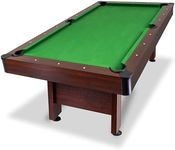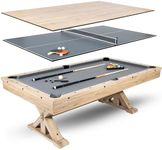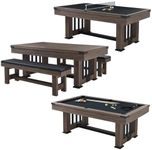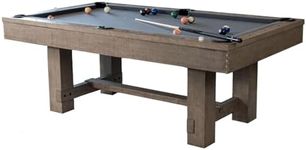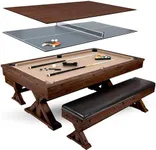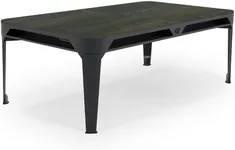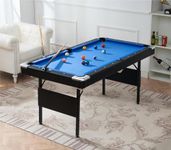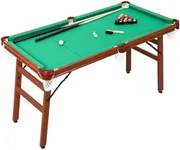Buying Guide for the Best Outdoor Pool Table
Choosing the right outdoor pool table can greatly enhance your leisure time and provide endless entertainment for family and friends. When selecting an outdoor pool table, it's important to consider several key specifications to ensure you get a product that meets your needs and withstands the elements. Here are the key specs to look out for and how to navigate them.MaterialThe material of an outdoor pool table is crucial because it needs to withstand various weather conditions. Common materials include treated wood, aluminum, and synthetic materials. Treated wood offers a classic look but requires more maintenance. Aluminum is lightweight and resistant to rust, making it a good choice for humid or rainy climates. Synthetic materials, such as resin or composite, are highly durable and often require the least maintenance. Choose a material based on your local climate and how much maintenance you're willing to perform.
Weather ResistanceWeather resistance refers to the table's ability to withstand sun, rain, wind, and temperature changes. Look for tables with UV-resistant coatings to prevent sun damage and waterproof features to protect against rain. Some tables also have wind-resistant designs to stay stable during gusty conditions. If you live in an area with extreme weather, prioritize high weather resistance to ensure longevity.
SizeOutdoor pool tables come in various sizes, typically ranging from 6 to 9 feet. The size you choose should depend on the available space and the type of gameplay you prefer. Smaller tables (6-7 feet) are suitable for casual play and smaller spaces, while larger tables (8-9 feet) are ideal for more serious players and larger areas. Measure your outdoor space carefully and consider how much room you'll need around the table for comfortable play.
Playing SurfaceThe playing surface of an outdoor pool table is usually made from materials like slate, MDF (medium-density fiberboard), or synthetic alternatives. Slate provides the best playing experience with a smooth and consistent surface but is heavy and expensive. MDF is lighter and more affordable but may not offer the same level of play quality. Synthetic surfaces are designed to mimic slate and are often weather-resistant. Choose a playing surface based on your budget and how serious you are about the game.
Frame and LegsThe frame and legs of the pool table provide stability and support. Look for sturdy construction with materials like treated wood, metal, or high-quality synthetic materials. Adjustable legs can be beneficial for leveling the table on uneven surfaces. Ensure the frame and legs are robust enough to handle outdoor conditions and provide a stable playing experience.
AccessoriesConsider the accessories that come with the pool table, such as cues, balls, and covers. High-quality accessories can enhance your playing experience. A durable cover is essential for protecting the table when not in use. Some tables come with built-in storage for accessories, which can be a convenient feature. Evaluate the included accessories and consider if you need to purchase additional items separately.

